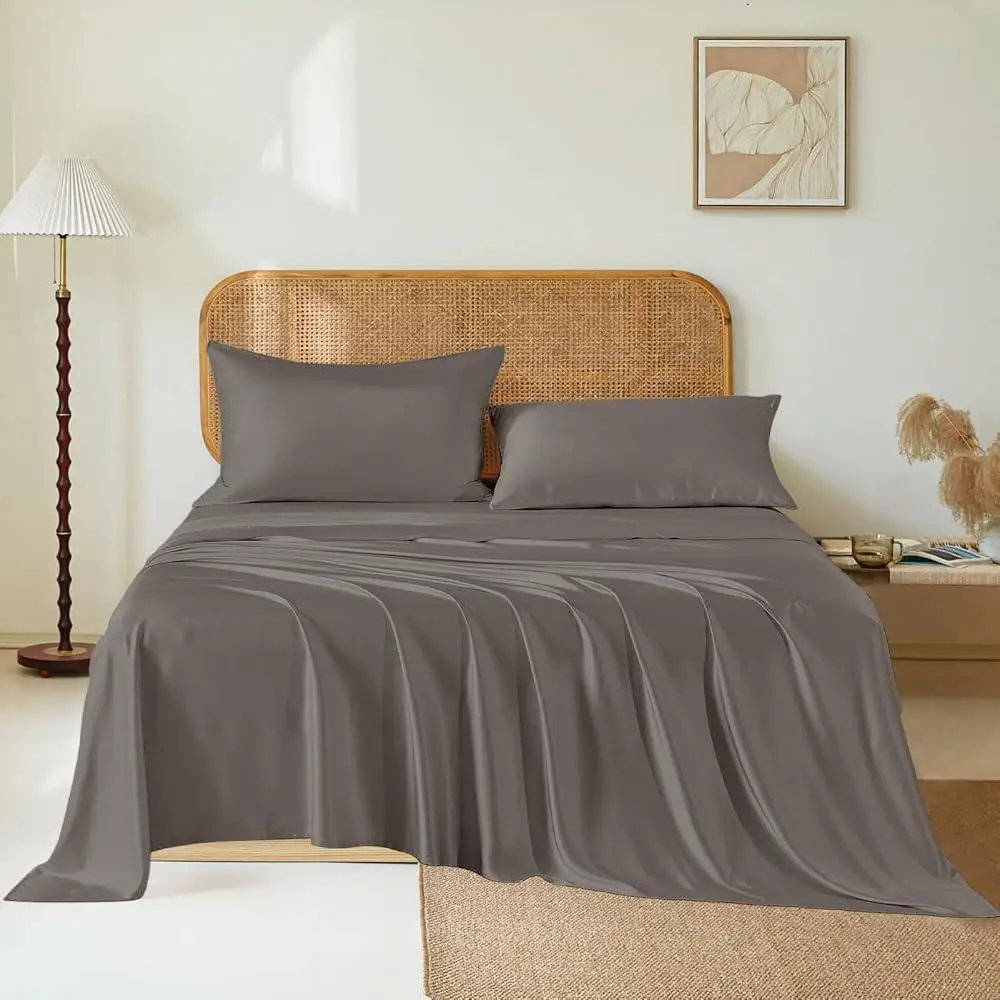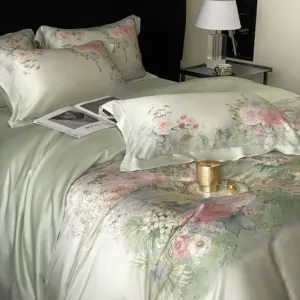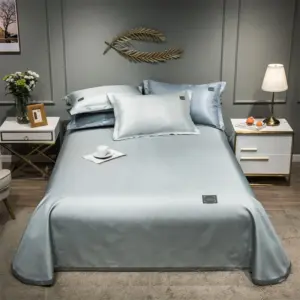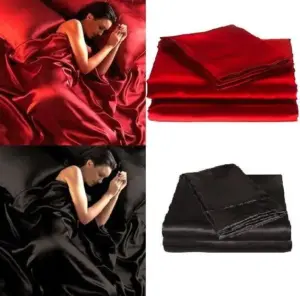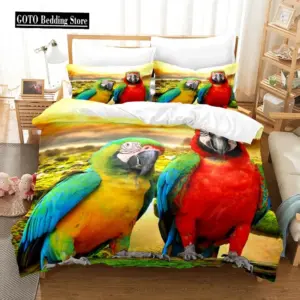Introduction: The Evolution of Luxury Textiles
Silk has been treasured for thousands of years as one of the world’s most luxurious textiles. This smooth, lustrous fabric traditionally comes from the cocoons of silkworms, specifically the Bombyx mori moth. In recent years, however, a new category of textiles has emerged: vegan silk. These innovative fabrics aim to replicate the desirable properties of natural silk without using animal products, instead relying on plant-based or cellulose-derived materials.
The growing interest in vegan silk alternatives reflects broader consumer shifts toward ethical consumption and sustainable materials. As awareness of traditional silk production methods has increased, many people seek options that align with their values while still delivering the luxury experience they desire.
This guide aims to provide a thorough comparison between traditional and vegan silk fabrics, examining their features, production processes, performance characteristics, and ethical considerations. Understanding the traditional silk vs vegan silk comparison helps consumers make informed decisions based on what matters most to them—whether that’s texture, durability, environmental impact, or ethical concerns.
The luxury textile industry continues to evolve, with innovations bridging the gap between performance and ethics. Before exploring alternatives, it’s essential to understand what makes natural silk so special and how silk vs vegan silk differences impact your experience with these fabrics.
Understanding Natural Silk: The Original Luxury Fiber
Natural silk is primarily produced by the Bombyx mori silkworm, though other insects can also produce silk fibers. This remarkable material consists mainly of fibroin, a protein that creates its characteristic strength, sheen, and smooth texture.
The traditional sericulture (silk farming) process involves several stages:
– Cultivation of silkworms on mulberry leaves
– Harvesting cocoons once the silkworms have spun them
– Boiling cocoons to kill the pupae and dissolve the gummy sericin protein
– Unwinding the continuous filaments (up to 1,000 meters per cocoon)
– Degumming and processing the fibers into thread or fabric
The molecular structure of silk gives it unique properties. The protein chains align in specific ways that create both strength and flexibility while reflecting light to produce its characteristic luster. For centuries, silk has symbolized luxury and refinement, with trading routes like the famous Silk Road named for this precious commodity.
Quality silk is often measured in momme weight, with premium Mulberry silk sheets typically falling between 19-25 momme. This measurement indicates the fabric’s density and durability, with higher numbers generally representing heavier, more luxurious silk. Understanding momme rating explained silk quality helps consumers identify superior silk products among various options.
The Exceptional Properties of Natural Silk
Natural silk possesses a remarkable combination of qualities that have made it prized for millennia:
Physical Properties:
– Exceptional softness that feels luxurious against the skin
– Natural high luster with a subtle, sophisticated sheen
– Elegant drape that flows gracefully
– Lightweight yet substantial feel
Performance Characteristics:
– Outstanding breathability allowing air circulation
– Natural thermoregulation that keeps you cool in summer and warm in winter
– Impressive strength when dry (comparable to steel of the same diameter)
– Relatively weak when wet, requiring gentle handling during cleaning
– Moderate elasticity with good recovery from stretching
Health and Wellness Benefits:
– Naturally hypoallergenic properties suitable for sensitive skin
– Efficient moisture-wicking capability (can absorb up to 30% of its weight in moisture)
– Low friction against skin and hair, reducing irritation and bedhead
– Resistance to dust mites and other common allergens
These exceptional benefits mulberry silk sheets provide make natural silk especially suitable for luxury bedding. The combination of smoothness, breathability, and temperature regulation creates an ideal sleep environment that feels indulgent while supporting health and comfort. The protein structure of silk also interacts favorably with human skin and hair, unlike many synthetic fabrics that can cause friction, static, and moisture imbalance.
What Are Vegan Silk Alternatives?
Vegan silk refers to a category of textiles designed to mimic the desirable properties of natural silk without using animal-derived materials. These alternatives are typically made from plant-based or cellulose-derived fibers that undergo specific processing to achieve silk-like characteristics.
The development of these alternatives has been driven largely by ethical concerns surrounding traditional silk production, which typically involves boiling silkworm cocoons with the pupae still inside. For consumers who prefer cruelty-free products, vegan alternatives mulberry silk offer options that align with their values while still providing luxury.
Most high-quality vegan silks are produced using advanced manufacturing techniques that transform plant fibers into smooth, flowing textiles. Many utilize closed-loop production systems that recycle water and solvents, minimizing environmental impact.
It’s important to distinguish between truly sustainable vegan silks and less eco-friendly synthetic alternatives. While fabrics like polyester can be manufactured to look like silk, they lack the performance benefits of natural or plant-based options and typically create greater environmental concerns due to microplastic shedding and non-biodegradability.
The most common types of premium vegan silk include those made from eucalyptus (TENCEL™ Lyocell), bamboo, and cupro (Bemberg™), each with unique properties and production methods. These vegan silk bedding options provide alternatives that closely approximate the look and feel of natural silk while aligning with plant-based values.
Types of Vegan Silk: Properties and Production
Eucalyptus Silk/TENCEL™ Lyocell
- Derived from sustainably managed eucalyptus forests
- Processed using a closed-loop system that recycles over 99% of water and solvents
- Creates exceptionally soft, smooth fibers with excellent drape
- Outstanding moisture management (absorbs 50% more moisture than cotton)
- Naturally cooling and breathable
- Biodegradable at end of life
Bamboo Silk
- Made from rapidly renewable bamboo (can grow up to 3 feet daily)
- Contains natural antibacterial properties
- Production methods vary significantly:
- Bamboo lyocell: eco-friendly closed-loop process
- Bamboo viscose: more chemically intensive process
- Extremely soft with a subtle sheen
- Excellent breathability and moisture-wicking
Cupro (Bemberg™)
- Produced from cotton linter (the fine, short fibers around cotton seeds)
- Utilizes what would otherwise be a waste product
- Creates a fabric with remarkable similarity to silk
- Biodegradable with excellent draping quality
- Smooth surface with temperature-regulating properties
- Less prone to static than many other fibers
Orange Fiber Silk
- Innovative material made from citrus juice byproducts
- Lightweight with silky texture
- Utilizes agricultural waste that would otherwise be discarded
- Relatively new with limited commercial availability
Other emerging innovations include soy silk (from tofu manufacturing byproducts), lotus silk (from lotus stem fibers), and banana silk (from banana plant stems). Each offers unique properties while providing sustainable alternatives to traditional silk.
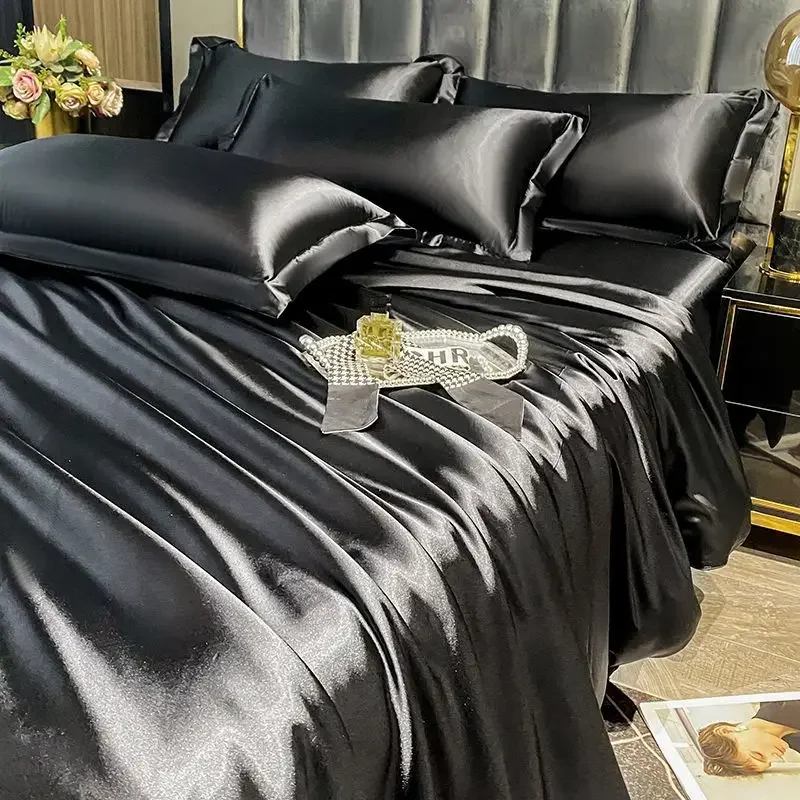
The eucalyptus silk sheets available today represent significant technological advancements in creating plant-based luxury. Understanding how is vegan silk made helps consumers appreciate the innovation behind these sustainable alternatives and make informed choices based on both performance and ethics.
Feature Comparison: How Vegan Silk Measures Against Natural Silk
| Feature | Natural Silk | Vegan Silk (Plant-Based) |
|---|---|---|
| Source | Bombyx mori silkworm cocoons | Plant fibers (eucalyptus, bamboo, cotton linters, etc.) |
| Composition | Fibroin protein | Cellulose fibers (processed differently by type) |
| Ethical Aspect | Traditional production harms silkworms; peace silk alternatives exist | Cruelty-free, no animal products involved |
| Environmental Impact | Moderate water use; limited chemical processing; biodegradable | Varies by type; generally lower water use; closed-loop options available; biodegradable |
| Softness | Exceptionally soft with unique “buttery” feel | Very soft; specific feel varies by type |
| Sheen/Luster | Natural high sheen with depth | Good luster, sometimes slightly more matte |
| Durability | Strong when dry, weakens when wet; 2-3 years with proper care | Generally strong both wet and dry; 2-5 years depending on type |
| Breathability | Excellent | Very good to excellent (varies by type) |
| Thermoregulation | Superior temperature regulation | Good to very good (eucalyptus excels here) |
| Hypoallergenic | Naturally hypoallergenic | Generally hypoallergenic (bamboo has additional antibacterial properties) |
| Moisture Management | Absorbs up to 30% of weight without feeling damp | Varies: eucalyptus excellent (absorbs 50% more than cotton), bamboo very good |
| Care Requirements | Delicate; hand washing recommended; no bleach; air dry | Generally easier; many are machine washable on gentle; air dry recommended |
| Relative Cost | Higher (premium natural material) | Moderate to high (typically 10-30% less than natural silk) |
The performance differences between natural silk and its vegan counterparts are nuanced. Natural silk maintains certain advantages in thermoregulation and its distinctive feel, while many silk vs vegan silk comparison analyses show that plant-based alternatives often excel in durability and ease of care.
It’s worth noting that different types of vegan silk perform differently—eucalyptus-based fabrics tend to offer the closest approximation to natural silk’s temperature regulation, while bamboo-based options might provide better moisture management. The pros cons silk vegan silk considerations will vary based on personal priorities and which specific alternative you’re evaluating.
Softness and Texture: The Tactile Experience
The tactile experience of silk against skin is one of its most celebrated qualities, and how vegan alternatives compare in this regard is often a deciding factor for consumers. Natural silk has a distinctive feel often described as “buttery” or “liquid” smoothness, with a subtle friction that distinguishes it from synthetic materials.
Vegan silk alternatives each have their own unique feel. TENCEL™ lyocell from eucalyptus offers perhaps the closest approximation, with a cool, smooth surface that glides against the skin. Bamboo-derived fabrics tend to have a slightly softer, more relaxed feel, while cupro provides an exceptionally smooth surface that closely mimics silk’s drape.
The manufacturing process significantly impacts the final texture. Higher-quality vegan silks undergo specialized finishing techniques that enhance their smoothness and drape. The weave also matters—both natural and vegan silks benefit from sateen or charmeuse weaves that maximize their natural luster and smooth surface.
A common misconception is that vegan silks feel “artificial” or plastic-like. Premium plant-based alternatives avoid this entirely, though their molecular structure (cellulose versus protein) does create subtle differences that discerning users might notice. Choosing ideal silk bedding texture is a personal decision that depends on your sensitivity to textile differences and specific comfort preferences.
Durability and Care: Practical Considerations
The longevity of your bedding is an important practical consideration that affects both your experience and the overall value of your purchase.
Natural Silk Durability and Care:
– Typically lasts 2-3 years with proper care
– Strong when dry but loses up to 20% of strength when wet
– Requires gentle handling during cleaning
– Can yellow over time if exposed to direct sunlight
– Care instructions:
* Hand wash in cool water with mild detergent
* Never use bleach or enzyme-containing detergents
* Do not wring or twist
* Air dry away from direct sunlight
* Iron on low heat if necessary
Vegan Silk Durability and Care:
– Typically lasts 2-5 years depending on the specific type
– Maintains strength when wet, making cleaning easier
– Generally more resistant to yellowing
– Less prone to water staining
– Care instructions (varies by type):
* Machine wash on gentle cycle with mild detergent
* No bleach or fabric softeners
* Tumble dry on low heat or air dry
* Iron on low setting if needed (often unnecessary)
The practical advantage of many bamboo silk sheets and other vegan alternatives is their resilience during cleaning, which can make them more cost-effective over time despite similar initial pricing. The easier care requirements also make vegan options more practical for busy households or those who prefer low-maintenance luxury.
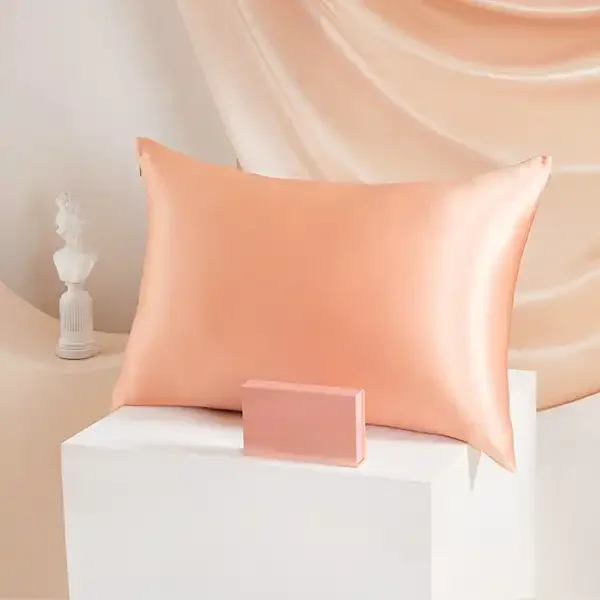
Environmental Impact: A Detailed Assessment
The environmental footprint of textile production deserves careful consideration when comparing natural and vegan silk options.
Water Usage:
Natural silk requires significant water for mulberry tree cultivation and processing. Estimates suggest producing 1kg of silk can use 20,000-50,000 liters of water. By comparison, eucalyptus-based TENCEL™ uses approximately 95% less water, and bamboo is naturally rain-fed in most regions.
Chemical Processing:
Traditional silk production uses relatively few chemicals during degumming. Vegan alternatives vary widely—TENCEL™ Lyocell uses a closed-loop process that recycles over 99% of solvents, while some bamboo viscose processes use more intensive chemical treatments. Cupro production has improved significantly but still requires chemical processing of cotton linters.
Biodegradability:
Both natural silk and plant-based vegan silks are biodegradable, breaking down naturally at the end of their lifecycle. Natural silk may decompose more quickly (within 1-5 years in proper conditions) than some processed cellulose fibers, though both are significantly better than petroleum-based synthetics that can persist for centuries.
Carbon Footprint:
The carbon impact of silk production comes primarily from transportation and processing energy. Vegan alternatives can have lower carbon footprints, especially when using rapidly renewable sources like bamboo that sequester carbon during growth.
Certifications like OEKO-TEX Standard 100 and FSC (Forest Stewardship Council) provide assurance about chemical safety and sustainable sourcing for environmentally friendly silk fabrics. The vegan silk sustainable production process continues to improve as technology advances and consumer demand increases.
Ethical Considerations: Beyond Materials
The ethical dimension of fabric choice extends beyond environmental impact to include animal welfare and human labor considerations.
Traditional silk production involves boiling silkworm cocoons with the pupae still inside, killing the developing moths before they emerge naturally and break the continuous silk filament. This process raises animal welfare concerns for many consumers who prefer choosing silk cruelty-free options.
Peace silk (also called Ahimsa silk) offers a middle ground by allowing the moths to emerge before harvesting the cocoons, though this results in shorter fibers and more expensive production. Vegan silk alternatives eliminate animal use entirely, making them suitable for those following vegan principles.
Labor practices vary across both traditional and vegan silk production. Historically, silk production has faced criticism for poor working conditions in some regions. Similarly, plant-based alternatives vary in their labor standards. Looking for Fair Trade certifications can help identify products with verified ethical labor practices.
Supply chain transparency is another important consideration. Some manufacturers provide detailed information about sourcing and production methods, while others offer limited visibility. This transparency (or lack thereof) can be an important factor when making ethical purchasing decisions.
Performance Benefits: Comfort and Wellness
The practical comfort benefits of both natural and vegan silks make them superior to conventional bedding fabrics for many users.
Breathability is exceptional in both natural silk and high-quality vegan alternatives, allowing air circulation that prevents overheating. Natural silk has a slight edge in moisture management due to its protein structure, which can absorb moisture without feeling damp. However, eucalyptus-based fabrics are particularly effective at wicking moisture away from the body.
Both material types excel at thermoregulation, adjusting to body temperature to keep you cool in summer and warm in winter. This ultimate guide temperature regulating sheets explains how different fibers achieve this effect. Natural silk’s protein structure provides slightly better insulation in cold conditions, while eucalyptus-based fabrics often feel cooler to the initial touch.
Eucalyptus Silk Bedding Sets, Eucalyptus Silk Sheets
Price range: $360.24 through $393.60 Select options This product has multiple variants. The options may be chosen on the product page- Price range: $267.82 through $306.55 Select options This product has multiple variants. The options may be chosen on the product page
Bamboo Silk Sheets, Cooling Silk Sheets
Price range: $130.76 through $177.80 Select options This product has multiple variants. The options may be chosen on the product pageBamboo Silk Sheets, Queen Size Silk Fitted Sheet
Price range: $230.24 through $297.88 Select options This product has multiple variants. The options may be chosen on the product pageMulberry Silk Fitted Sheet, Mulberry Silk Sheets
Price range: $486.21 through $944.97 Select options This product has multiple variants. The options may be chosen on the product page- 100% Bamboo Fiber Parrot Duvet Cover Set – Queen King Twin Size Tropical Bedding for Comfort & StylePrice range: $241.95 through $380.95 Select options This product has multiple variants. The options may be chosen on the product page
The hypoallergenic features silk sheets benefit those with sensitive skin or allergies. Both natural silk and vegan alternatives resist dust mites and mold, with bamboo offering additional natural antibacterial properties. Natural silk’s smooth protein fibers are particularly gentle on sensitive skin, while the smooth cellulose structure of vegan alternatives creates similar benefits.
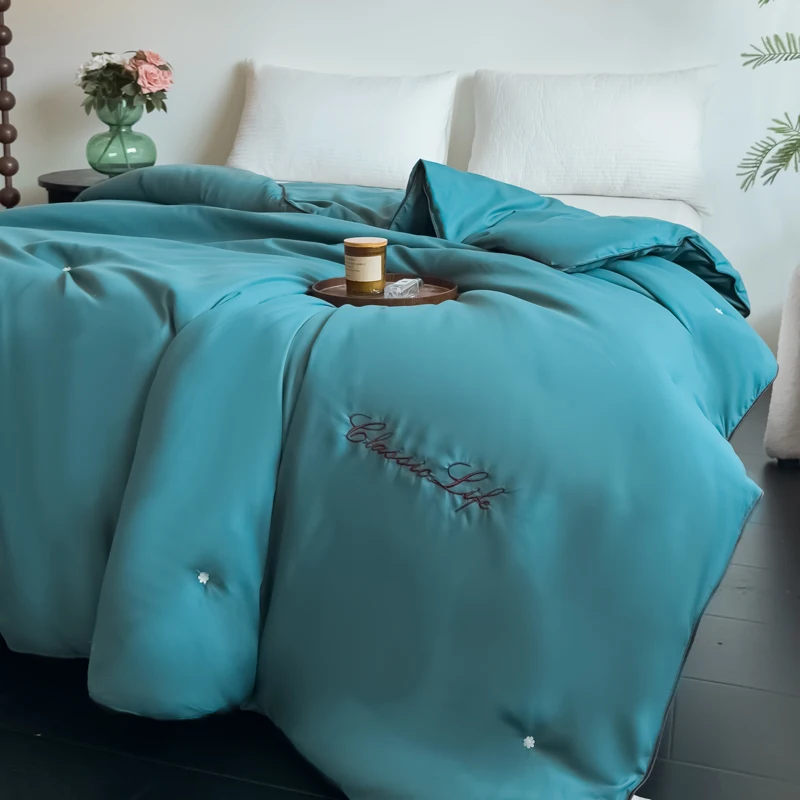
Choosing Between Natural and Vegan Silk: Decision Factors
When deciding between natural and vegan silk, consider these scenarios to help guide your choice:
Natural silk might be preferable if:
– You value the traditional, historic luxury of authentic silk
– The specific protein structure benefits for skin and hair are important to you
– You appreciate the distinctive “buttery” feel that only natural silk provides
– You’re willing to commit to more delicate care requirements
– The slightly superior temperature regulation in extreme conditions matters to you
Vegan silk would be the better choice if:
– Ethical considerations around animal welfare are important to you
– You prefer easier care and maintenance for your luxury bedding
– Durability when wet is a practical concern
– Environmental impact is a priority in your purchasing decisions
– You have a more limited budget but still want luxury performance
For bedding specifically, vegan silk options like eucalyptus and bamboo offer practical advantages in terms of care and durability while still providing excellent sleep benefits. For apparel where the distinctive drape of natural silk is desired, the decision may lean more toward personal preference and the specific wearing context.
Many consumers wonder is vegan silk as good as real silk, and the answer depends entirely on your priorities. Both offer luxury experiences with different strengths. Sanctuary Soft offers both options, including complete bamboo silk bedding sets for those who prefer plant-based alternatives.
Frequently Asked Questions About Silk Alternatives
Can vegan silk truly replicate the feel of natural silk?
High-quality vegan silks come remarkably close to natural silk’s feel, with eucalyptus-based fabrics offering the most similar experience. While discerning users may notice subtle differences, many people cannot distinguish between premium vegan alternatives and natural silk in blind touch tests.
How do I identify quality vegan silk products?
Look for specific fiber information (e.g., TENCEL™ Lyocell, not just “bamboo”), appropriate weight for the application, reputable certifications (OEKO-TEX, FSC), and detailed care instructions. Quality vegan silks will specify their production methods and sustainability practices.
Are all vegan silks equally sustainable?
No. Sustainability varies significantly between different types and production methods. Lyocell processes (used for eucalyptus and some bamboo fabrics) typically have better environmental profiles than viscose/rayon processes. Look for closed-loop production methods and third-party certifications.
Which vegan silk alternative most closely resembles natural silk?
Eucalyptus-based TENCEL™ Lyocell and cupro (Bemberg™) most closely replicate natural silk’s drape, sheen, and feel. Bamboo-based fabrics offer similar benefits with a slightly different feel that some users actually prefer.
Can vegan silk sheets provide the same benefits for hair and skin?
Both natural and vegan silks provide significant benefits compared to cotton or synthetic fabrics. The smooth surface reduces friction that can cause hair breakage and skin creasing. While the protein structure of natural silk offers some unique benefits, high-quality vegan alternatives provide very similar advantages.
Are vegan silks genuinely cruelty-free throughout their production?
Plant-based vegan silks don’t use animal products, making them suitable for vegan lifestyles. However, comprehensive cruelty-free status would also consider environmental impacts on wildlife habitats and insect populations. The best options use sustainably managed resources with minimal ecosystem disruption.
When comparing natural silk vs alternative fabrics, these considerations help consumers align their purchases with both practical needs and personal values.
Making Your Informed Choice: Beyond Marketing Claims
As you navigate the choice between natural and vegan silk options, looking beyond marketing claims becomes essential. Many products use terms like “silk-like” or “silky soft” without offering the performance benefits of either natural silk or premium plant-based alternatives.
To make truly informed choices, look for specific information about:
– Exact fiber content and production methods
– Weight and density metrics (momme for natural silk, GSM for alternatives)
– Third-party certifications verifying environmental or ethical claims
– Clear care instructions that indicate quality and durability
– Transparent information about the supply chain
Ultimately, your personal priorities should guide your decision—whether you value traditional luxury, ethical considerations, practical durability, or specific performance characteristics. The good news is that innovations in both natural silk production and silk bedding alternatives continue to improve, giving consumers more options that combine luxury with responsibility.
By understanding the true differences between these materials beyond marketing hype, you can select bedding that provides the experience you desire while aligning with your values. Whether you choose the historic luxury of natural silk or the innovative comfort of plant-based alternatives, informed decisions lead to better satisfaction with your purchase and a more restful sleep experience.

